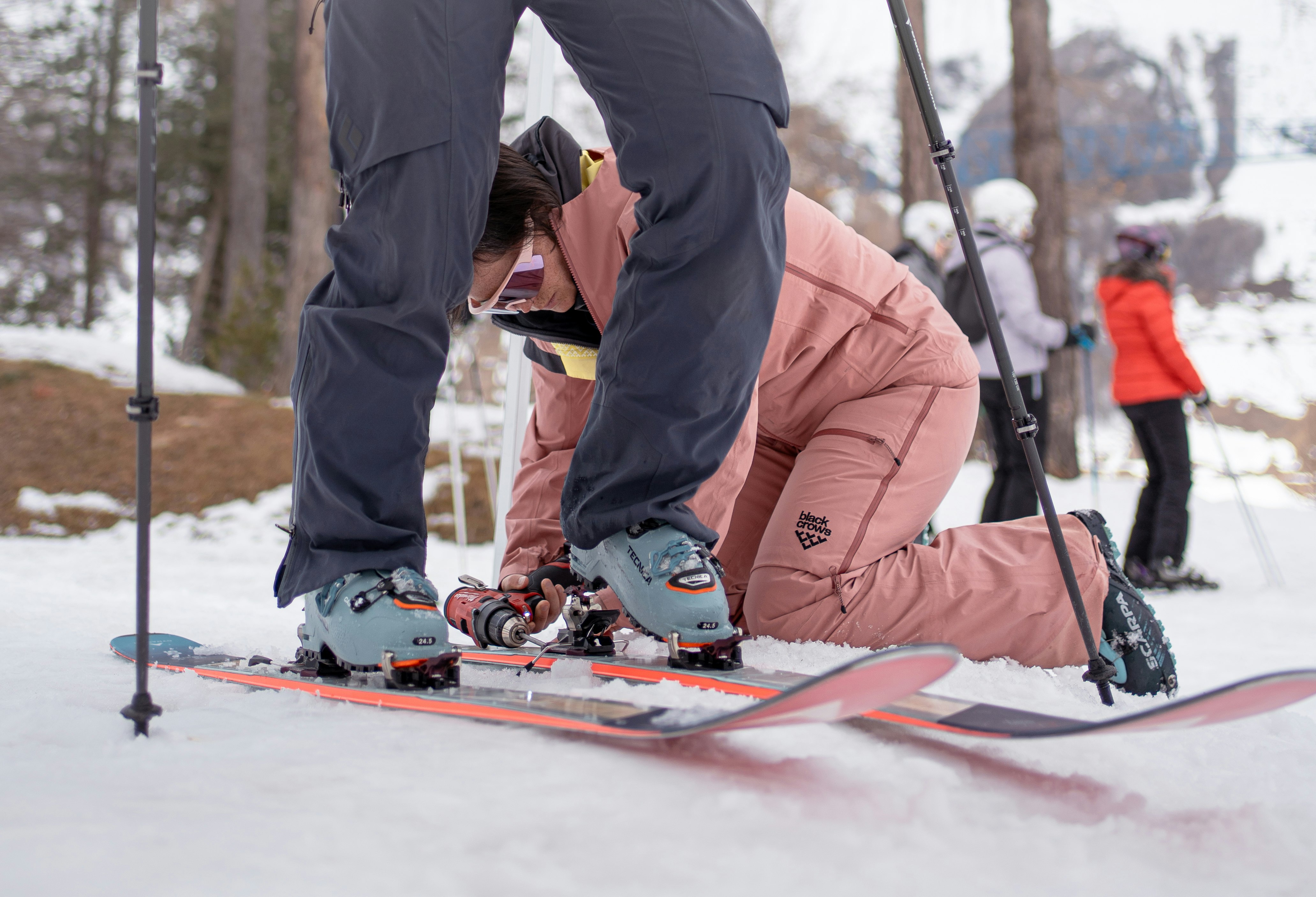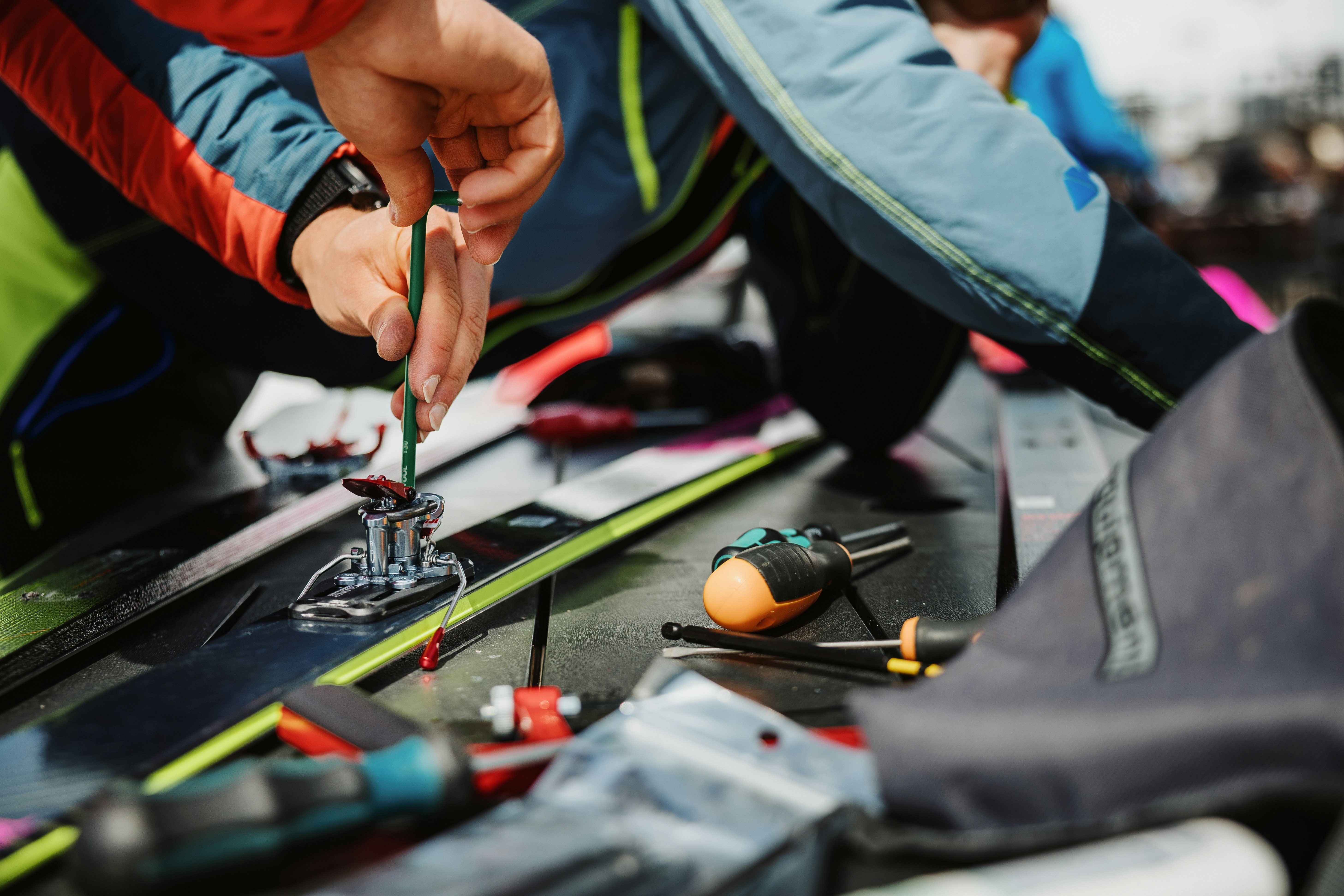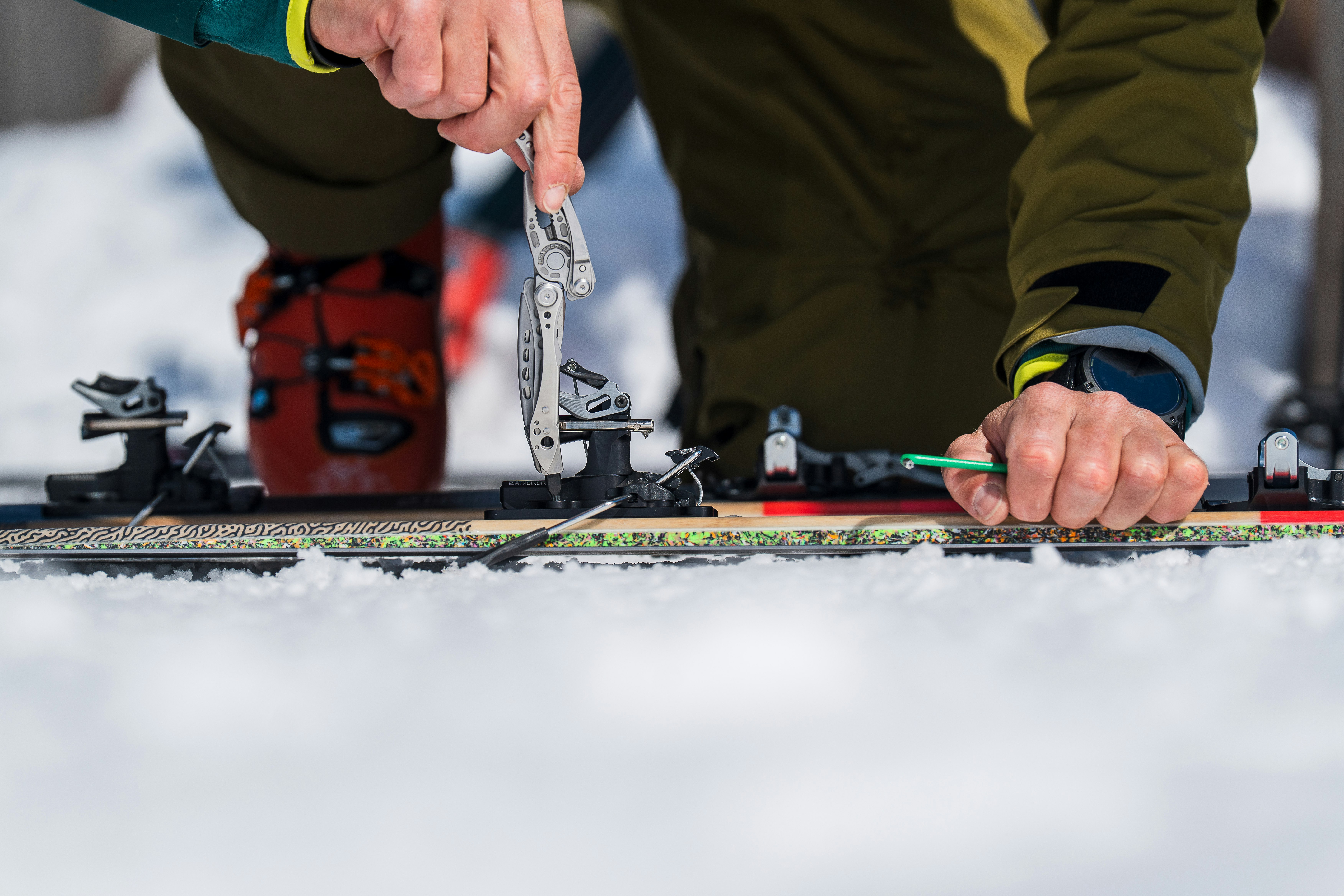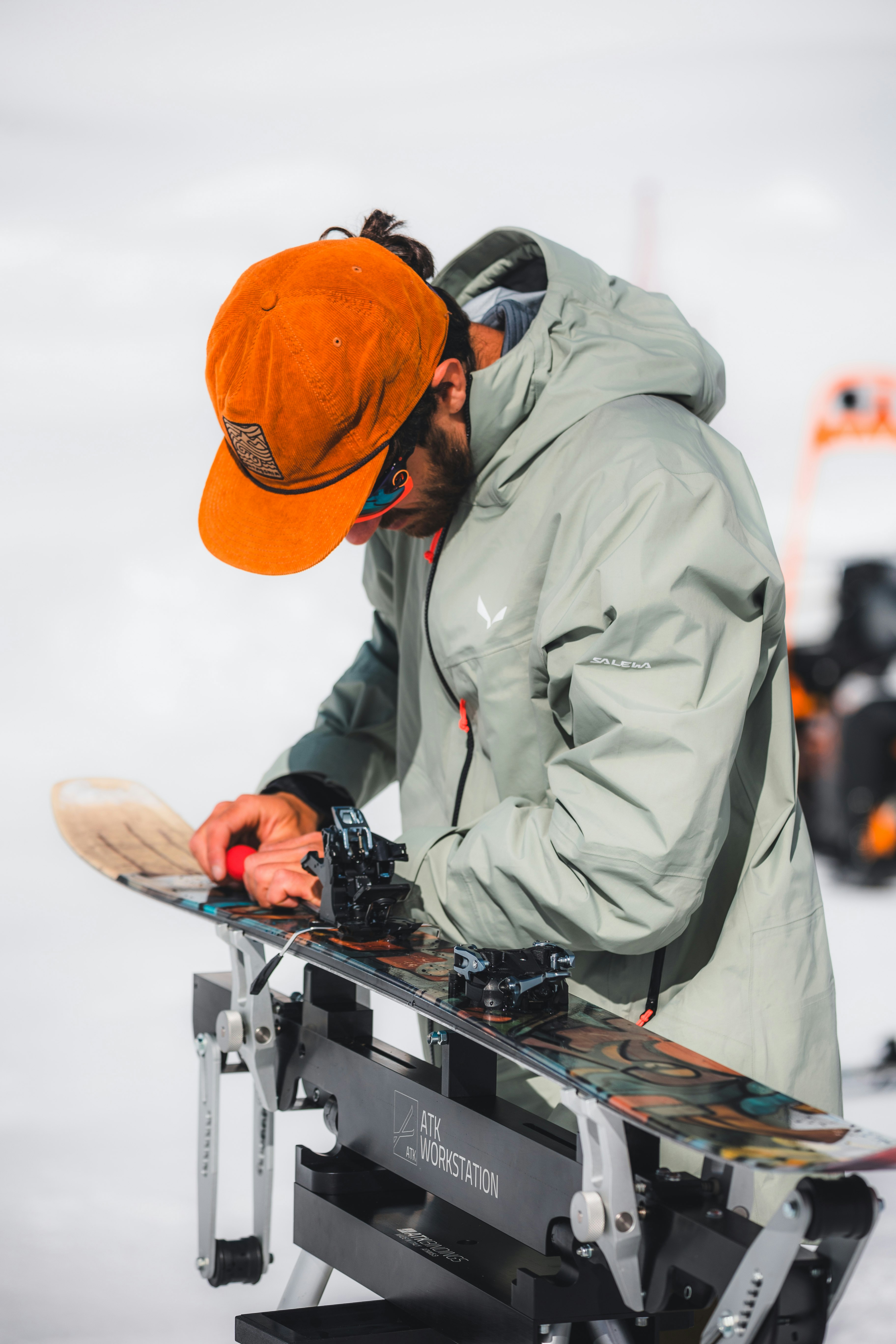Bindings: a thousand flavors
Choosing the binding that best suits your needs can prove tricky, as it is a mechanically complex component of the setup
- Author: Guido Valota
- Photographer: Jacopo ChianaleNicola DamonteGiovanni DanieliRiccardo De ContiPierre LucianazElisa Bessega
There are more options out there than ever before. From minimalist tech bindings to beefier options with all the bells and whistles. With such a variety of AT bindings available compared to their alpine counterparts, it’s important to know how to choose the right ones for you, and for the demands of modern-day touring
There’s so much choice out there. And they come in all shapes and sizes, even if the pin-tech standard has been adopted across the board and for years now all tour and freeride boots have come complete with metal inserts. Choosing the right binding for you can be a complicated process, as it’s a mechanically complex piece of equipment. This despite having benefited from many decades of research and development, since the arrival on the scene of Fritz Barthel’s Low Tech Dynafit bindings almost forty years ago. The functional features and design of the binding, like the risers and the drop between the rear and front inserts, have a tangible effect on how you get up and down the mountain. And there are dozens and dozens of pin bindings out there on the market. In contrast, when it comes to alpine skiing, where there is a much larger number of skiers and skis, the choice of bindings is far narrower.
Luckily, brands seem to be converging in the same direction, with their latest models designed to meet the reality of modern skimo. These days, practically all recently developed models for touring and other similar uses follow the same line, though they haven’t yet reached formal levels of standardization for basic features like measuring the lock and release forces, or the drop and ramp angle of the foot in ski mode.

Neither is there a corresponding regulatory framework; the TÜV and DIN certifications for alpine ski bindings don’t cover the many variables of ascent and descent in the backcountry. But it seems that the era of technical (and marketing) experimentation is over, which, like it or not, is a necessary step for all human activities involving a large amount of hardware. This removes many of the doubts that used to arise when choosing a set, and basically all of them for the majority of users—the average intermediate skiers you find at the side of the piste or on classic mountain routes that make up four out of five sales. Moreover, manufacturers have developed solutions that broaden the use case for once specialized models. We see wider bases and mount patterns under very lightweight bindings, which in turn have been made more substantial by adding an extra gram or two in the right places; more effective brakes available in more sizes; better adjustment tracks and cushioned end-of-travel; and multinorm compatibility in hybrid models, eliminating the need for boot modifications. Over the next few pages, bindings will be listed in order of weight, from lowest to highest. The weight of your setup is an important consideration on the mountain, whether you’re focused on performance or take a slower, more mindful approach. We don't use the weight of the binding as a measure of its value, but rather because it's the most reliable indicator of its intended use. Generally speaking, the heavier the binding, the more features, stability, strength and damping it has. The exceptions to this rule are indicated in each review and in general coincide with more developed or niche models, or, conversely, more outdated ones.

Race
Full pin, U-spring in the heel piece, minimal base and mount pattern, minimal/negative drop, sometimes the heel tower is mounted on the adjustment track. Fixed release values and riser. Don’t try to be clever and mount a race binding on heavier skis to try and keep the weight of your setup down, we tried that 40 years ago and it didn’t work then, so it’s even less likely to work with modern skis and boots.
Ultralight and lightweight touring
All full-pin bindings. This is the largest segment, versatile enough for the most common usage. The latest models come with a full range of features, including a riser with at least two levels, brakes and heel adjustment track. And most importantly they have a modern drop, lower than that of older bindings.
Full-pin for freetouring and freeride
More robust than previous models, they have stronger springs, wider base and mount patterns to fit wider skis, and modern drops. There’s also more contact between the boot and binding in descent for better contact with the terrain and to limit torsion and slop in the heel. Obviously these come with a full range of features, including risers with different levels to compensate for heavy, stiff boots with less ROM. In some models, the toe piece can rotate horizontally, permitting lateral release.
Hybrid pin + step-in heel unit, and hybrid pin + full step-in toe and heel units
Designed for demanding riders on powerful skis for freeride/freetouring. These models are relatively new and there aren’t many of them, especially the latter, but looking at figures for the USA and central and northern Europe, the technology is already well established. The idea is to climb using the pins in the toe piece as a fulcrum, without raising the heel piece and frame when walking (like a tech binding). In descent the binding locks into place with the sole of the boot in direct contact with the ski/binding system. Advantages include enhanced contact with the terrain, torsional and lateral rigidity, energy transfer and response, shock absorption, as well as a reduced stand height between the boot and the ski. This comes close to the effect of an alpine binding, minus the plate. Obviously, only the full pin + step-in heel and toe unit models fully correspond to this idea. The first version (with step-in heel unit only), in any case offers excellent torsion resistance with a little less weight underfoot. All hybrid bindings weigh more than any full-pin model, have zero drop and generally no more than two riser heights in ascent.
Under each binding entry in this guide, there are a lot of data, more than the average manufacturer provides (otherwise what are we even doing here?), and whether it will work best as part of a Race, Light, Tour or Free setup. As we’ve already mentioned, the latest binding models are more versatile than ever before. But it’s always best not to go overboard with creative crossovers, especially if you don’t have the technical skill or knowledge. Aside from metric data and spring strength, out on the mountain factors like elasticity and mass come into play. So, lightweight bindings belong with lightweight skis and boots, and vice versa. Otherwise you could end up with an unstable setup at one end of the scale, or an unresponsive one at the other. The same logic applies when mounting your bindings. It’s 2026, equipment manufacturers know exactly what they’re doing, and that’s why they put that little arrow where they have, and not a centimeter or two further forward or back. Do anything else and the effect is immediately noticeable to skilled, demanding skiers—usually professionals—who only do this as they know they’ll be able to use it to their advantage. Anyone else will likely suffer the effects. Don’t listen to anybody who says different. And be extra careful with second hand models or new boots. The adjustment plate may accommodate the change, but you could find yourself a little off kilter once it’s on your foot.

This is a thorny subject which could easily take many more pages, if not chapters, to fully unpack. Out on the mountain, however, things are more cut and dried, if you discount human error. Every choice has very real pros and cons, especially out in the backcountry, particularly when you consider the risks of losing a ski, being caught in an avalanche, or injuries from the edge of a released ski that’s still attached to the leash. As we see it, it’s a personal choice based on the situation and your own views, as long as you take safety into account.
Here then, are the points that apply to everyone across the board: it’s the law to use a brake or leash on piste. No matter if you ascended on or off piste, whether it’s your only groomer run of the day, or you don’t have a lift pass; “the mountain is for everyone” doesn’t cut any mustard for the ski patrollers or for those affected by the damaged caused by your errant ski. Modern ski brakes have good spring strength and robust arms. They work well, but only if you remember to switch them from walk to ski mode before hitting the downhill—no joke, this happens more often than you’d think. And when switching from walk to ski means rotating the heel piece, do it as soon as you arrive at the top to prevent that most classic of mishaps: the ski that accidently slides down the slope. On steep hardpack the brake won’t stop the ski immediately, but sooner or later the arms will find something to slow it down. Even the strongest spring-loaded brakes on alpine skis can get bunged up with ice or compact snow buildup. So just imagine an AT binding, after it’s been really packed in there on the way up. To reduce the risk of this happening, clean and lubricate the mechanism, slider and base regularly. In adverse snow conditions, clear the area around the brake manually. Leashes should be fitted exactly according to the manufacturer’s instructions, otherwise you risk voiding the binding warranty. The latest, lightest leashes (with a spiral cord and aluminum carabiner) are as indestructible as a keychain, but calibrated to break under certain pressure (like when a ski drags a skier into an avalanche). If they ever get damaged or caught in a fall, substitute them with a new pair and use them as keychains. Obviously we’re not going to advise the third way—no brake or leash—in fact we should advise against it. These days ski brakes are mandatory even in races. But this is after all a free country and we’ll limit ourselves to viewing this as typical of the light and fast approach or tourers with a minimalist mindset. Not for beginners, or anyone who doesn’t have a good idea of what they’re doing, but nevertheless, very clean and elegant. Basically the opposite end of the scale to leashes. If you post a pic of your leash on Instagram, don’t be surprised if you get mercilessly roasted.

With a myriad of options available, what does a binding need to have for racing, touring or a once-in-a-lifetime descent on two 120 mm planks? Let’s find out. The race sector is concentrated in a few very niche models. They’re light, minimalist and quick to operate. And brakes have become a must here too. The fast and light approach is clean and minimalist, for big verticals and multiple transitions. You don’t really need a lot of riser levels as light boots have plenty of range of motion. If you’re staying light, but with a wider ski underfoot, look for bindings with a wide hole pattern, there are more and more options out there, even in the light category. A Tour setup needs to be practical, reliable and durable. So your bindings need robust springs, adjustable release values (even better in the toe piece too), solid, effective brakes and various riser heights. Lastly, the Freeride category merits a whole separate chapter to itself. With the launch of the new HY by ATK, the choice of bindings to mount on freeride skis just keeps on growing. Once you could decide between tech bindings, the Diamir or the Marker Duke. Which meant you had three options: light, medium or heavy. These days, freeride skis can be mounted with completely different bindings depending on the skier’s requirements, yet perform just as well. From full pins, to hybrids with a step-in heel, transformers like the Shift or Duke PT, up to CAST bindings, everyone needs to choose the type that works best for them. Proportionally it works in the same way, an increase in weight corresponds to an increase in maximum release values. Lightweight bindings have also made a giant leap forward in terms of grip and edge hold, there are riders who do backflips and 360s in tech bindings (including during our tests), but for total reliability you have to use a burlier binding. And for women, the same applies for each category.
Share this article

